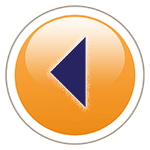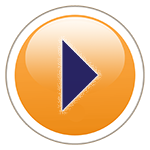Book choices for today:
What Kind of Seeds are These? Heidi Roemer
Seeds and Seedlings Elaine Pascoe
From Seed to Plant Gail Gibbons
From Seed to Plant Allan Fowler
Oh Say Can You Seed? Bonnie Worth
Busy Seeds Irma Black
The Seven Continents Wil Mara
Maps and Globes Jack Knowlton
Botany: (first circle)
Need for lesson – Seeds already started in clear jar that have started growing, a bean seed for each child (pre-soaked), paper towels, clear jar or vase, beans for the jar, Seed Matching work, and Kinds of Seeds.
Botany 2
All of your seeds were hard like this one. (pass around circle) The one you have on your towel has been soaked in water and is now soft. Very gently rub your seed (demonstrate with your seed). This is the seed coat. The outside layer of a seed is called the seed coat. Can you say “seed coat” as you look at and feel yours.
Now very carefully open your seed (demonstrate with yours). Inside we find the very start of a plant. It is very little now. See if you can find the leaves in your seed.
Isn’t that amazing? Inside every seed is a tiny plant just waiting to grow. I started growing these seeds many days ago. (show jar/vase of seed already started) They are growing and getting bigger. See how the seed opened up to let the little plant grow? Let’s add dry seeds to this other jar and watch them grow.
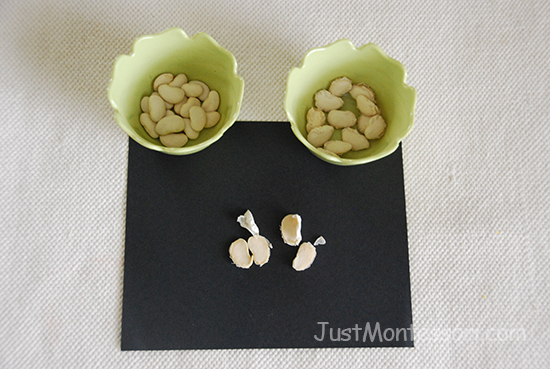
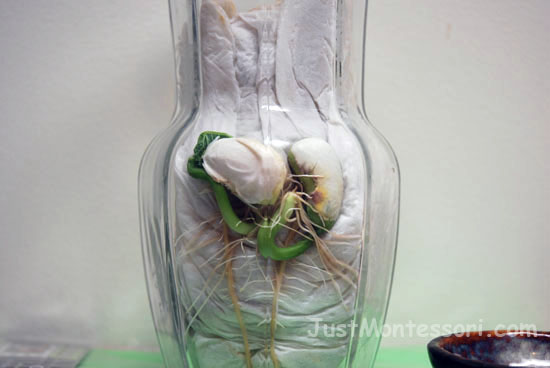
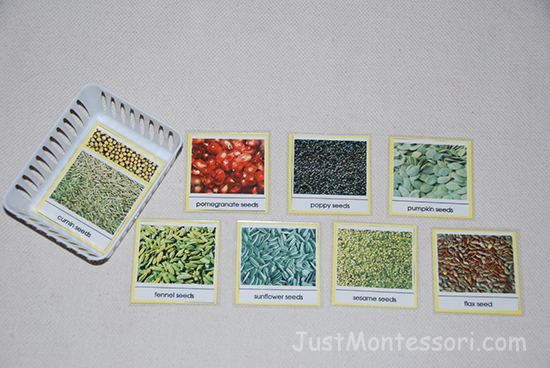

Additional Works:
Seeds Growing – You can also try a variety of seeds to watch grow.
Seeds – Have a variety of seeds for children to look at and feel.
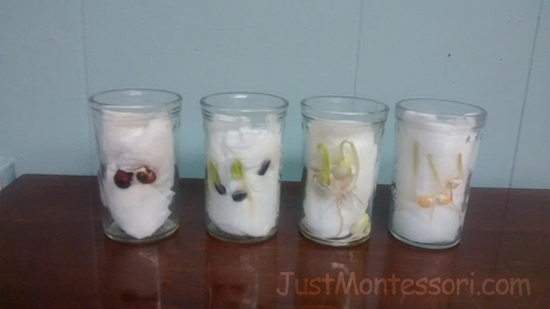

Practical Life:
Care of the Environment – Introduce caring for the plants in your classroom. Watering and cleaning the leaves of plants continue throughout the school year. A tray or basket with needed materials can be kept on the Botany or Practical Life shelf, depending on your space. This lesson is also reviewed and talked about when children do planting in the Spring; Week 32 Day 2.

Provide sticks or other items for children to place inside of a plant they watered. If they see a plant without a stick they will know it needs to be watered and if it has one they will know it doesn’t need to be at this time. (Check plants as to its need for watering and control the removing of sticks as needed each day).
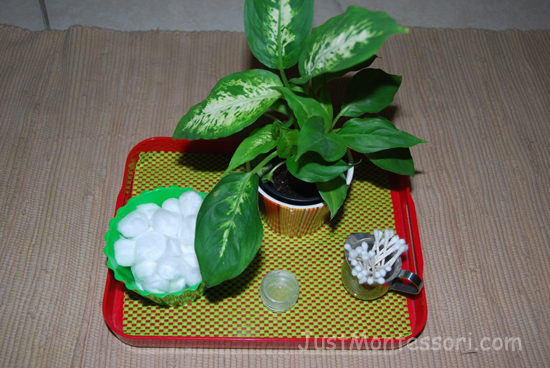
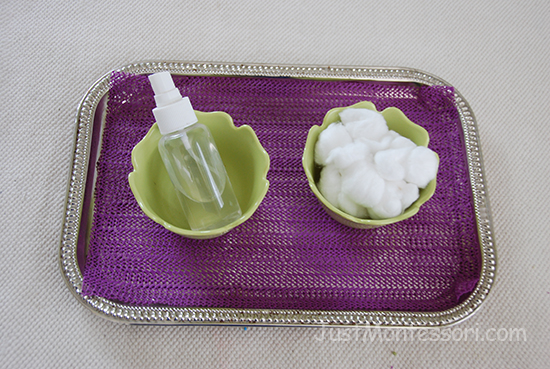
A simple spray bottle and cotton balls can be used to clean the leaves of plants also.
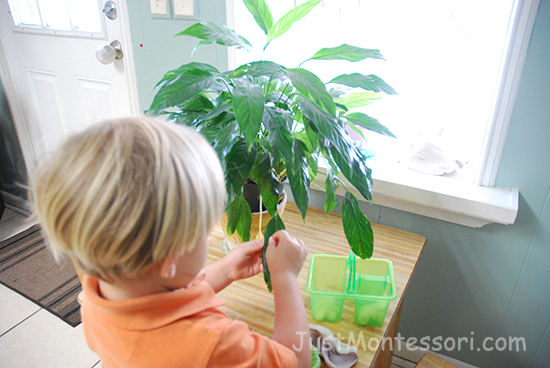
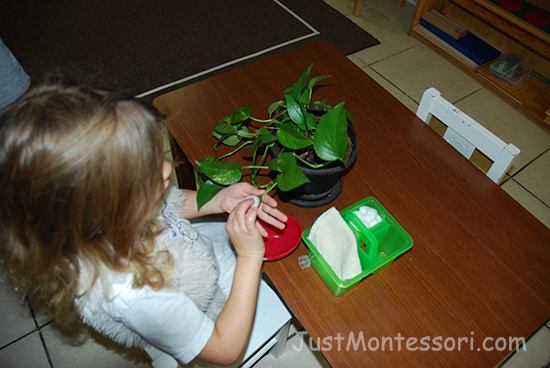
Art:
Seed Wheel – Provide white paper plates, variety of seeds, and glue. Mark paper plates into sections and children can glue different seeds in each section. Older children can label each type of seed on their plates.
Inside a Seed – I do not know the source of this seed page. The child cuts out the seed and the small plant. They then glue the small plant inside of the folded seed to show the baby plant inside the seed waiting to grow.
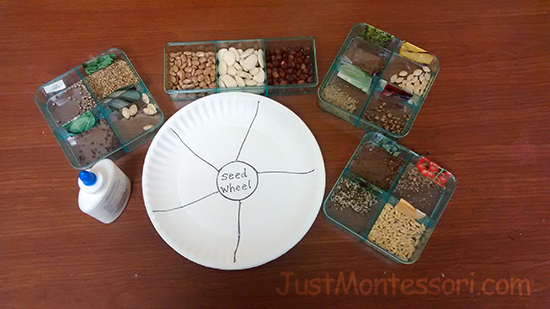
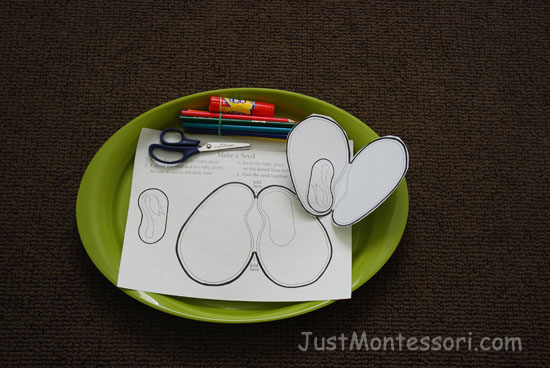
Songs/Poems:
Five Little Seeds
Five little seeds, five little seeds.
Three will make flowers, and two will make weeds.
Under the leaves, and under the snow,
Five little seeds are waiting to grow.
Out comes the sun, that every plant needs,
And up come two, funny old weeds.
Geography: (second circle)
Need for lesson – A globe that shows an equator line, airplane model, Continent Globe, and beads the color of each continent to make continent bracelets. Another idea is to add a review of land and water and children can paint with blue and green paints. Combine these ideas to what would best fit your group of children.
Geography 3
Boys and girls we already learned that the globe of our earth is a model of our earth. The globe is a pretend smaller size of our really big earth. We learned about the two important things we find on the earth, land and water.
This is another globe of our earth. It has colors on it. Each of these colors shows us very large parts of land that have water all around most of them. We call these colored parts continents. Can you say “continents?” All the blue parts are the oceans.
There is much more ocean than land. Let’s learn some of the names of the continents. We live on the orange one. It is called North America. (continue naming the remaining continents on the globe)
Geography 4
There is something on this globe that I want to show you. As we look at it, we can see a line all the way around the middle of the globe. It is called the Equator. Can you say “equator”? When we talk about the equator, we are talking about the middle space around the earth. There isn’t a real line around the earth. It is on maps and globes to help us to know where the middle is.
If we say above the equator, we mean up here. If we say below the equator, we mean down here. Do we live above or below the equator?
On the very top of the globe is the part called the North Pole. The very bottom of the globe is called the South Pole. So the earth has a North and South Pole. The poles are the coldest parts of the earth. Near the equator is the warmest part of the earth.
When we learn about the places on our earth, we call it Geography.
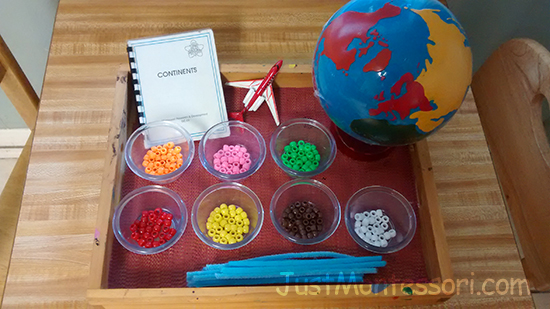
Additional Work:
Land and Water Animals – Have a basket of different animals, two labels; one that says “land animals” and one that says “water animals”, and two sealed containers containing water and dirt.
Continent Matching Cards – I made a matching card set of the continents. Children can match them or play the concentration game with them.
Continent Folders – I made these folders a long time ago. One for each continent and the colors of the ribbons correspond with the colors of the Montessori Geography Maps. Inside are a variety pictures from that continent. I found all the pictures from National Geographic Magazines.

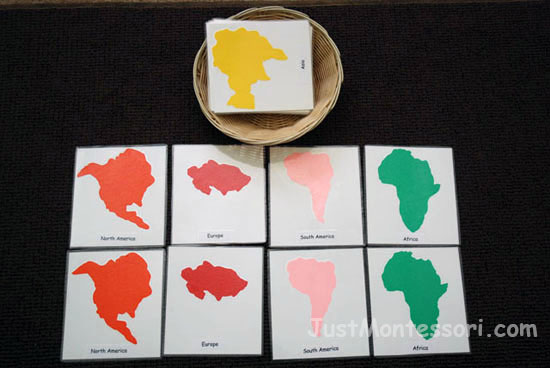

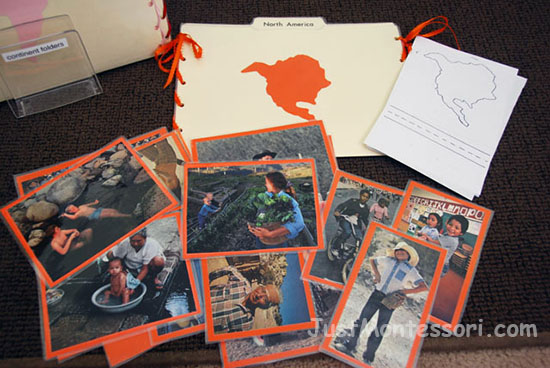
Songs/Poems:
Continent Song
These are the continents, these are the continents
these are the continents of the world!
North America, South America, Africa, Europe, and Asia
don’t forget Australia, don’t forget Antarctica
These are the continents of the world,
now what do you think of that!
Ocean Song
The oceans of the world are big and blue
Remembering their names that’s easy for you
Atlantic, Pacific, Indian too,
Don’t forget the Arctic, it’s blue too!
Song (CD) choices for today:
Super Seeds Make Believe Cd (Macmillan)
The Magic Seeds Seasonal Songs Cd (Macmillan)
The Story of a Seed Learning Through Music with Hestia
Buy Weeks 1-5 PDF
-
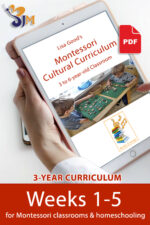 (B) Weeks 1-5$25.00
(B) Weeks 1-5$25.00

